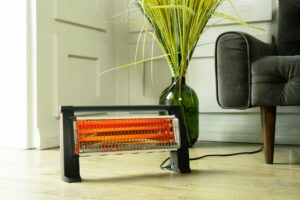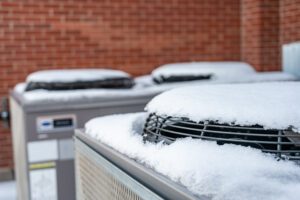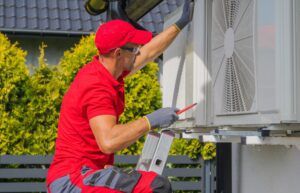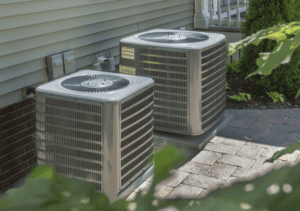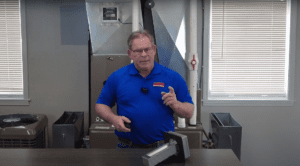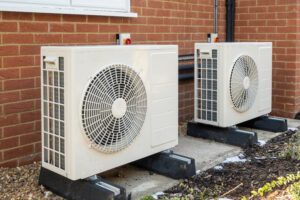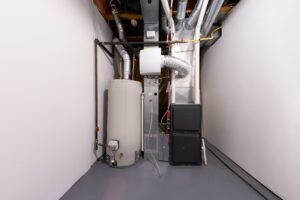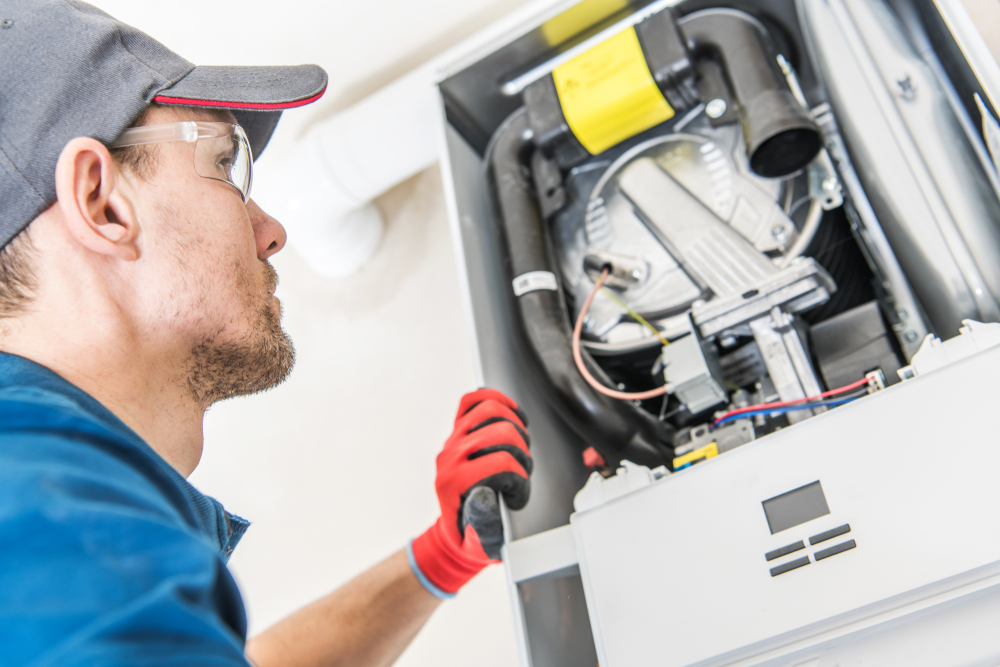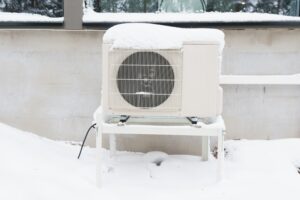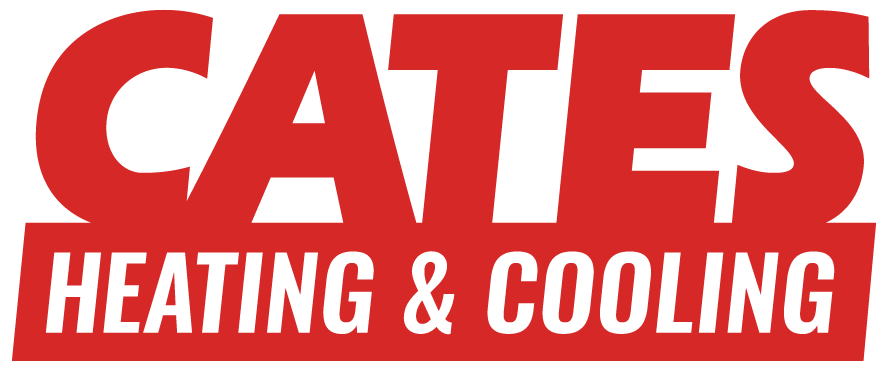Your furnace has one real job: keep your family warm during the cold Kansas City winters. To do this, the furnace utilizes its heat exchanger. The heat exchanger is one of the most important components of your furnace, and should it break down, you will not only be left feeling chilly, but you could actually be in danger as well.
Cates Heating and Cooling wants homeowners to be more aware of the heat exchanger and the common problems associated with this piece of equipment. Let’s learn all about the heat exchanger!
What Is a Heat Exchanger?
Time to start with the basics. The heat exchanger is a series of tubes or coils that are contained in a sealed chamber in your furnace. These tubes can be different shapes and sizes based on the model and fuel type of the furnace. The tubes heat up, and this heat transfers to the air that will then be blown into your home.
How Do Heat Exchangers Work?
Heat exchangers are surprisingly simple. A sealed chamber is used to create heated air. During the combustion process, the tubes or coils in the heat exchanger get hot. As the air blows through the heat exchanger, it heats up, too. A fan then blows the air into your ductwork and throughout your home. This simple process is how your entire home can stay warm even when it is freezing outside.
Fueling Heat Exchangers
Since heat exchangers are powered by combustion, a fuel source is necessary. The most common fuel type in the United States is natural gas. However, propane, oil, and electricity are other fuel types for furnaces that allow heat exchangers to do their jobs. The type of fuel that your furnace uses will likely be dependent on what is available in your area, the climate in which you live, and more.
The price of fuel types will also vary. For example, electric is typically the most expensive fuel type, but it is 100 percent energy-efficient, meaning homeowners will save money on their heating bills. If you are trying to decide what kind of furnace to purchase, it is best to speak to a professional HVAC technician.
What Can Go Wrong with Your Heat Exchanger?
Metals are known for being strong and durable, but that doesn’t mean that these metal components can’t wind up damaged. Keep in mind that the rapidly heating metal will expand, and this hot metal will contract back to its original shape when the furnace turns off, and the coils cool down. After a few years, the metal will become brittle, which leads to cracking, snapping, and other damage.
When the heat exchanger is damaged, toxic flue gases can leak into your home, including carbon monoxide, a colorless, odorless gas known for being a silent killer. However, carbon monoxide poisoning often presents as flu-like, with headache, dizziness, weakness, upset stomach, vomiting, and confusion.
Signs There Is a Problem with Your Heat Exchanger
Here are a few signs that there is a problem with your heat exchanger that needs to be addressed:
- Change in Flame Color: A steady blue flame is standard for a fully functional gas furnace. Should the flame change color or start to burn erratically, there is a good chance your heat exchanger is cracked and external oxygen is getting into the system.
- Soot Build-up: A build-up of soot inside your furnace is a good sign that the heat exchanger is damaged. Likely, the burner isn’t burning properly and will need to be fixed or replaced. This problem could be attributed to titled burners, cracks in the heat exchanger, and more.
- Discoloration: If the metal of the heat exchanger is discolored, it is likely cracked. You might notice that some spots of the metal are darker than the rest.
- Carbon Monoxide Detectors Sound: If your carbon monoxide detector starts beeping, you could have a damaged heat exchanger. While other things could cause a carbon monoxide leak, you should have your HVAC system serviced if you are aware of a carbon monoxide leak. Additionally, if you have a carbon monoxide leak in your home, you should call the fire department and evacuate the house.
Dangers Associated with Heat Exchangers
Heat exchangers that are damaged or leaking release toxic gases into the air. Carbon monoxide, which is not usually a byproduct of gas combustion in the furnace, can seep into your home if the heat exchanger is cracked or has an air leak. Carbon monoxide can also become problematic if there is something wrong with how the system is combusting its fuel source.
How to Fix a Heat Exchanger
Due to the potential dangers of heat exchangers, we recommend that a professional HVAC technician complete all repairs and installations. DIY jobs could lead to serious problems, including carbon monoxide leaks.
How to Care for a Heat Exchanger
You can prevent damage to your heat exchanger by ensuring that your furnace is maintained by a professional. Having an HVAC expert check on your system at least once a year allows your heat exchanger to be inspected for damage and repaired before something more serious happens.
During these maintenance checks, your HVAC technician can look for things that could lead to heat exchanger damage in the future and take care of any problems before they arise. For example, blocked vents can restrict airflow to the heat exchanger and lead to overheating and cracking. Cates Heating and Cooling offers two different maintenance plans for our customers.
Another easy way to care for your heat exchanger is to keep your filters fresh. You should change your air filter as the manufacturer’s instructions dictate. Most filters last between three and six months, but some should be changed monthly.
If you believe you are having problems with your heat exchangers, call us today. Kansas residents can use 913-888-4470, and Missouri residents can call 816-944-1844.


